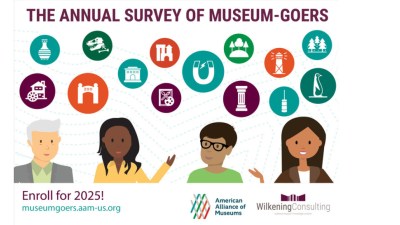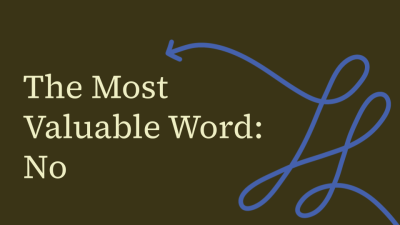
This article originally appeared in the November/December 2022 issue of Museum magazine, a benefit of AAM membership.
The museum field must work together to answer the many questions surrounding NFTs and their implications for museum practice.
Museums select, preserve, and study artifacts of tangible and intangible heritage. They create opportunities and spaces for communication to help people achieve a more mindful future based on memory, knowledge, and culture. Over the past century, museums have continued to make significant strides in how to best preserve and present their physical collections. However, today, every museum must also develop reliable policies and systems that support sustainable access to their digital ecosystems and the content within it.
Currently, leading museums worldwide are conducting high-quality digitization, creating digital twins of real objects, storing huge amounts of media files, developing powerful databases, and applying artificial intelligence technologies to collections cataloging and access. All of these digital production efforts help propel new research and popularize museum collections.
Digital programming and engagement are now an inescapable part of our lives, and they need to be an intrinsic part of the museum experience. As museums increase their digital activities (including digitizing collections and acquiring and commissioning born-digital art), they expect a return on those activities, such as an increase in website traffic that, in turn, increases membership or on-site visitation. Or they expect direct revenue from pay-to-play offerings such as livestreaming events.
Many museums are also wondering about the opportunities inherent in NFTs, or non-fungible tokens.
What Is an NFT?
An NFT is a digital receipt or certificate of ownership or authenticity of a “digital good.” NFT drops (the public release of an NFT) are the sale of digital representations of works of art. In addition to a digital surrogate of a collection object, an NFT could represent ownership of a born-digital artwork. Soon there will be time-limited NFTs to account for a temporary certificate of ownership or authority, which museums could use for membership, exhibition admission, or digital subscription.
NFTs are part of the technological evolution of the internet or Web3. This next stage will be characterized by a decentralized architecture and token-based economies, which define three critical technologies: blockchain, cryptocurrency, and NFTs. Blockchain is a decentralized digital public ledger that records transactions that are duplicated and distributed across a network of computer systems. This system of recording information makes it very difficult or impossible to change, hack, or cheat without it being tracked. Cryptocurrency, a digital token-based financial system, and NFTs both require the blockchain.
Web 1.0 required museums to publish and engage with audiences through institutional websites, and Web 2.0 required them to deepen engagement through social media platforms. Now museums must begin to consider how to leverage Web3 technologies and paradigms in their business models, operations, and digital strategy.
Assessing the Risk
As museums begin discussing whether to embrace NFTs as a revenue opportunity and cryptocurrency as a transaction option, assessing their viability is paramount. These are emerging technologies that represent some risk as the volatility of cryptocurrency has demonstrated. To participate, museums will need legal advice and investment in such things as staff training, secure storage of information related to the crypto wallet, and cyber security and merchant services. Museums wishing to “mint” and “drop” digital surrogates of collection objects will need legal clarity on collection rights and reproduction.
These legal, technological, and operational issues will require insight and expertise from others involved with Web3 to ensure success. Current platforms on which recent museum drops have been released, such as OpenSea, are generic exchanges where any kind of NFT can be purchased. However, organizations are beginning to offer exchanges specifically for cultural heritage and fine art. Partnering with such groups could allow museums to enter this market at low risk and with an expert guide.
For museums, the question of whether or not to purchase or sell NFTs or whether or not to use or accept crypto is similar to the late 1990s when the question was whether or not to have a website. These technologies will define future digital engagement and transactions, and mature usage standards will help the museum field create a genuine, transparent, and authentic cultural heritage environment—and potentially sustainable models in a digital world.
Basic NFT Questions Answered
Once the decision is made to pursue NFTs, there are a multitude of considerations. Here are a few frequently asked questions and answers to help inform decision-making.
Can museums monetize NFTs?
Yes. Museums have long sold the rights to use images, for example, in catalogs or as souvenirs. The same applies to digital art and NFTs, with potentially greater flexibility and profit. Also, if NFTs are resold, the originator will see a percentage of that resale. Tickets to an exhibition could be sold along with NFT souvenirs. Automated control of royalties or exhibition rental based on smart contracts with partners is also feasible. However, the same legalities apply to works under copyright, and museums will need to work with creators, estates, or other representatives.
Legally, the acquisition of an NFT is not related to the acquisition of an art object and any rights. How does one legally formalize the transfer (acquisition) of an NFT?
An NFT is a smart contract. Essentially, it is lines of code that assign ownership of the digital good represented. The code also manages the transferability of the NFT. When an NFT is minted, these lines of code are executed and added to the blockchain on which the NFT is being managed. Just as a museum would seek legal advice to draw up a contract, they must do the same here. Once on the blockchain, NFTs are nonrevocable.
What rights and guarantees does a smart contract give you? Does it leave the author (the previous owner) with the right to transfer the NFT to anyone or destroy it?
These details should be spelled out in the smart contract and can be viewed by auditing its source code. Make sure that the contract, which should be drawn up by professionals who understand these issues, accounts for downstream transactions.
How viable is the blockchain network? What will happen to it in, say, 10 years considering potential economic, energy, and technological crises?
Like any nascent technology, it is hard to predict its future. One can mitigate the risks by opting for NFTs based in the most decentralized, popular, and economically capitalized networks, like Ethereum. Because the value of an NFT is based on the market value of the cryptocurrency employed at the time of the transaction, it can fluctuate.
The intense computing power that is needed to mint NFTs is also a concern for museums seeking to meet environmental sustainability goals. However, platforms like Ethereum are pursuing greener computing solutions.
Can we officially own crypto wallets as a museum entity?
A digital wallet is required to buy or sell an NFT. The public is becoming familiar with this concept as they use Apple Pay, Samsung Pay, and Google Pay to store their debit and credit cards and make purchases with their mobile phones. Currently, the owner of the wallet is the person who knows its address and access password, and the verification process depends on each platform. However, the wallet “profile” does not allow any other personal data. (See “How Can .ART Help?” sidebar on p. 18 for information on how museums can get around this problem.)
We have received an NFT in our crypto wallet. How do we keep it safe now, and how do we ensure safety and readability in 10, 100, or 1,000 years?
There is no clear-cut answer to this question yet, but museums can use protocols similar to those used when they receive donations of stocks or bonds. Most museums will liquidate the asset as soon as possible, or in this case, exchange cryptocurrency for traditional currency.
Wait, There’s More
Increasingly, museums need a formal digital strategy to determine how they will embrace digital platforms and ecosystems in competitive and sustainable ways. Museums also need a reliable technology infrastructure as more critical information, business transactions, legal documents, and cultural heritage become digital and, specifically, born-digital collections. Museums renewing their insurance are likely seeing significant increases in cybersecurity premiums as insurers recognize the increased reliance on technology to support museum business.
With NFTs and cryptocurrency, there are currently more questions than the expertise, legislation, and analytical environments needed to answer them. The museum community is both intrigued by the possibilities and intimidated by the profound challenges surrounding digital art and NFTs. These questions, although seemingly overwhelming, are just the tip of the iceberg.
Other things to consider include the storage of the original NFT media file(s), which includes hosting, contracts, agreement parties, metadata payment periods and expiration, and access regulation, and whether a museum needs it’s own digital, 3-D, or metaverse space to display NFTs. What about NFTs that are based on artworks that have an element of artificial intelligence, especially dynamic ones that change over time? And what about NFTs that are based on real digitized objects and not original digital art or material?
The museum field needs a community of like-minded innovators and visionaries to propel discussion of such questions, embark on research, and otherwise navigate this digital dimension. We must create more opportunities for dialogue between museum leaders and practitioners, technology experts, and artistic representatives to better understand the potential and nuances of NFTs.
How Can .ART Help?
Since its conception in 2015, the team behind .ART Domains has been researching and providing the creative community with digital tools and solutions to bridge the gap between art, technology, and finance.
For example, as discussed in this article, museum ownership of a crypto wallet isn’t necessarily clear. However, .ART offers a solution to this problem: by registering a traditional .ART domain in the DNS, one automatically reserves the same name in the Ethereum Name Service (ENS), a distributed, open, and extensible naming system based on the Ethereum blockchain. The ENS name can then be activated and paired with a crypto wallet, thereby associating it with the museum.
This feature forms part of .ART Digital Twin, available in beta on x.art, an ecosystem that addresses the following concerns of IP rights protection, certification, and monetization of digital art objects.








Comments